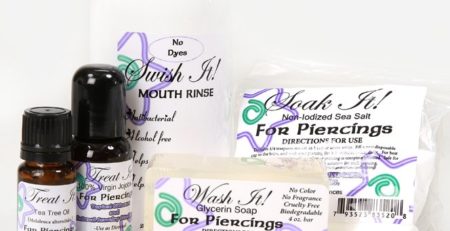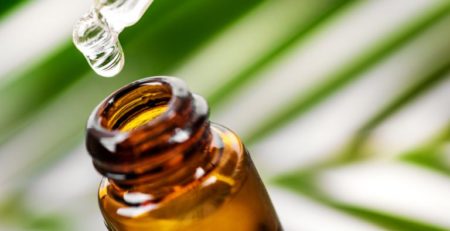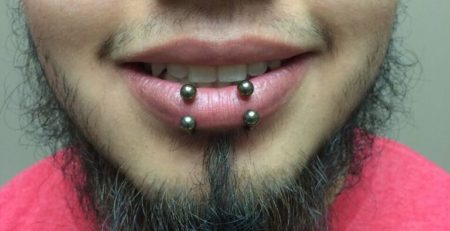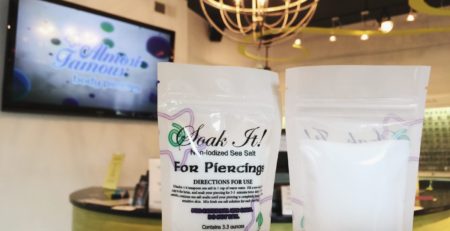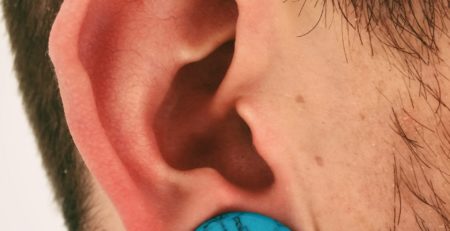Inflammation or Infection From a Piercing?
Remember: A piercing is a wound. Consequently, you should expect signs and symptoms of inflammation in the area of your piercing wound, including tenderness, swelling, discoloration, and possibly bruising, bleeding, and itching. Also, a natural part of the process for healing any wound includes the secretion of a white-yellow fluid containing dead cells and blood plasma. This fluid will dry and form a crust on your jewelry. To properly remove this crust, soften it first with a warm sea salt soak, or remove it after a shower.
Inflammation is normal when you experience any injury to the body. Inflammation is important to the healing process.
Signs of normal inflammation at the site of the piercing wound include:
• Redness • Swelling • Pain • Warmth in the wound area • Wound discharge that is light in color
You can help prevent infection in your piercing wound by:
• Washing your hands before touching your piercing wound or the jewelry
• If someone else is helping you care for your piercing, make sure they wash their hands before touching the piercing or jewelry, even if they are wearing gloves
• Keep your piercing wound clean and dry unless you are doing your aftercare
• Don’t use harsh cleansers such as rubbing alcohol
• Don’t scrub the area or remove any dried crust or scabs (wait until the discharge has been softened during a salt soak, then gently wipe it away)
• Do not use any creams or ointments on your piercing wound unless prescribed by a doctor
Hand washing is the first line of defense against wound infection. Wash your hands with soap and water for at least 30 seconds before you touch your healing piercing wound. It cannot be stressed enough how important it is to keep
your hands clean when caring for your piercing wound.
If you think your piercing may be infected, contact a medical professional immediately.
Signs of infection in the skin and tissue surrounding the piercing wound include one or more of the following:
• Pus-like drainage that is darker in color, and may or may not be foul smelling
• The skin around the wound feels warm to the touch
• General redness or red streaks on the skin surrounding the wound
• Increased pain, tenderness, and/or extreme swelling around the wound area
• Body chills or fever
• Tender lumps or swelling in your armpit, groin or neck
• For people with diabetes, you may experience high blood sugar, or have trouble keeping your blood sugar level.
Remember not to change your jewelry until your piercing is healed. If you have questions about your piercing, contact an Almost Famous Piercing Professional.


